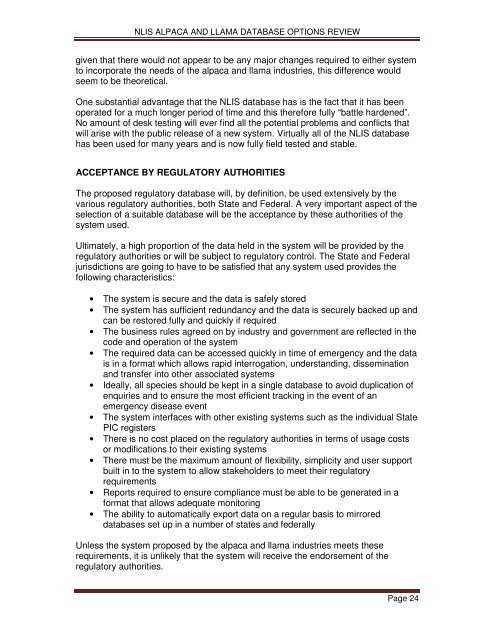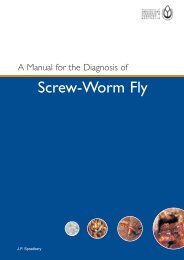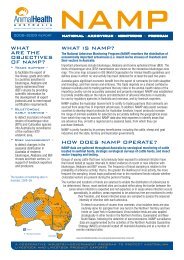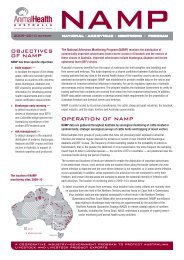National Livestock Identification System Alpaca and Llama ...
National Livestock Identification System Alpaca and Llama ...
National Livestock Identification System Alpaca and Llama ...
You also want an ePaper? Increase the reach of your titles
YUMPU automatically turns print PDFs into web optimized ePapers that Google loves.
NLIS ALPACA AND LLAMA DATABASE OPTIONS REVIEW<br />
given that there would not appear to be any major changes required to either system<br />
to incorporate the needs of the alpaca <strong>and</strong> llama industries, this difference would<br />
seem to be theoretical.<br />
One substantial advantage that the NLIS database has is the fact that it has been<br />
operated for a much longer period of time <strong>and</strong> this therefore fully “battle hardened”.<br />
No amount of desk testing will ever find all the potential problems <strong>and</strong> conflicts that<br />
will arise with the public release of a new system. Virtually all of the NLIS database<br />
has been used for many years <strong>and</strong> is now fully field tested <strong>and</strong> stable.<br />
ACCEPTANCE BY REGULATORY AUTHORITIES<br />
The proposed regulatory database will, by definition, be used extensively by the<br />
various regulatory authorities, both State <strong>and</strong> Federal. A very important aspect of the<br />
selection of a suitable database will be the acceptance by these authorities of the<br />
system used.<br />
Ultimately, a high proportion of the data held in the system will be provided by the<br />
regulatory authorities or will be subject to regulatory control. The State <strong>and</strong> Federal<br />
jurisdictions are going to have to be satisfied that any system used provides the<br />
following characteristics:<br />
• The system is secure <strong>and</strong> the data is safely stored<br />
• The system has sufficient redundancy <strong>and</strong> the data is securely backed up <strong>and</strong><br />
can be restored fully <strong>and</strong> quickly if required<br />
• The business rules agreed on by industry <strong>and</strong> government are reflected in the<br />
code <strong>and</strong> operation of the system<br />
• The required data can be accessed quickly in time of emergency <strong>and</strong> the data<br />
is in a format which allows rapid interrogation, underst<strong>and</strong>ing, dissemination<br />
<strong>and</strong> transfer into other associated systems<br />
• Ideally, all species should be kept in a single database to avoid duplication of<br />
enquiries <strong>and</strong> to ensure the most efficient tracking in the event of an<br />
emergency disease event<br />
• The system interfaces with other existing systems such as the individual State<br />
PIC registers<br />
• There is no cost placed on the regulatory authorities in terms of usage costs<br />
or modifications to their existing systems<br />
• There must be the maximum amount of flexibility, simplicity <strong>and</strong> user support<br />
built in to the system to allow stakeholders to meet their regulatory<br />
requirements<br />
• Reports required to ensure compliance must be able to be generated in a<br />
format that allows adequate monitoring<br />
• The ability to automatically export data on a regular basis to mirrored<br />
databases set up in a number of states <strong>and</strong> federally<br />
Unless the system proposed by the alpaca <strong>and</strong> llama industries meets these<br />
requirements, it is unlikely that the system will receive the endorsement of the<br />
regulatory authorities.<br />
Page 24





